-
Posts
27175 -
Joined
-
Days Won
82
Content Type
Profiles
Forums
Downloads
Posts posted by Yankee4Life
-
-
8 hours ago, sabugo said:
I believe it's been years now that I've suggested you should work for the Yankees. Hell, even George Costanza got a job there 🤣
You are not kidding but that would never happen because the guy makes too much sense and they could never have that in their organization.
-
5 out of 10, 64 seconds. I survived another week of the terrible twos (Tuesday and Thursday.) Getting five right today is tremendous for me.
-
6 minutes ago, sabugo said:
Very good article. Putting to words what we see with our own eyes.
And that is what drives me nuts. You and I and Jim and KC see this and we are just baseball fans that do not get paid a nickel by the Yankees for our time or input. But we see what the problem is. That is the difference.
-
14 hours ago, Jim825 said:
This article brings up many good points.
It sure did Jim and the first thing I thought of was why don't the Yankees realize this obvious fact themselves?
Do you remember the Orioles from Earl Weaver's time there? Ken Singleton said in a reprinted article that is included in a Thomas Boswell book that the Orioles worked on fundamentals so much and they got so good at it that other teams would almost get mad at them because they never threw to the wrong base. They were that good in doing the little things.
This is the main reason why they don't win. They'll pound bad pitching with homers by Judge and company but when the post season begins they are up against tougher pitching. And we all know what a failure Judge is in October.
-
10 out of 10, 57 seconds. This was one of the few days where reading all those baseball books and biographies helped me out.
-
Oh boy, this article says it all.
Why do all these Yankees seasons start to crack at the same time of year?
by Joel Sherman of the New York Post
“Listen, if you can’t spot the sucker in your first half-hour at the table, you are the sucker.” – Mike McDermott in the opening line of “Rounders”
The Yankees began an eight-game stretch Monday against a trio of teams that played poorly enough in July to fall from contention to sellers. It opens with their historic patsy, the Twins, at home, then three on the road in St. Louis and then two in their Steinbrenner Field home away from home against the Rays.
To end this month, the Yankees have a seven-game stretch against the Nationals and White Sox, the worst teams in the majors in the non-Rockies division.
To end this season, the Yankees have 13 games (the last six at home) against the White Sox and the two biggest sellers at the deadline, the Twins and Orioles.
This has always been the hope lingering for the Yankees, a soft schedule to get right on, to get fat on, to surge into the playoffs on. Except we are well beyond the halfway mark of this season and have to ask: “Are the Yankees the suckers?”
They might look around a table and see soft landing spots against big deadline sellers and wretched foes. But their opponents might look back and not see the Yankees as we have come to know them, but a bad team in those uniforms.
Cody Bellinger and Anthony Volpe chase down a hit that falls between them in the Yankees’ 7-1 loss to the Astros on Aug. 10, 2025.
And the key might be: Can the Yankees look in the mirror and see themselves as they actually are and not how they expect to be or delude themselves into seeing?
Because even if they salvage this season, there are a lot of internal questions that must be asked if Hal Steinbrenner keeps the leadership infrastructure intact or disassembles it.
One question that certainly needs to be answered is why has the team endured a middle-months dive for four straight years now. Once is a blip. Twice perhaps coincidence. But this is four times.
The Yankees went into the Twins series with a 20-31 record in their past 51 games, a stretch from June 13 through this past weekend. That is nearly one-third of a season with a .392 winning percentage. If you think it is a long season and playing one-third with that bad of a record is common even for winning teams then know this: In the 30 seasons since 1996, the Yankees have had that bad of a record over 51 games within a season three times:
Aaron Boone’s 2022 Yankees.
Aaron Boone’s 2023 Yankees.
Aaron Boone’s 2025 Yankees.
The Yankees have made a habit of struggling through the middle of the season under Aaron Boone.
The 2024 Yankees were not bad for quite that long, but had a 10-23 stretch from June 14-July 26 that stands alone as the worst 33-game span in the organization’s past three decades.
And check those dates. Because the 2022 Yankees had multiple 20-31 stretches from July 7-Sept. 5 in a 53-game period in which they were a combined 22-31.
The 2023 Yankees had multiple 20-31 or worse stretches from June 21-Aug. 29 in a 59-game period in which they were 24-35.
And the 51-game downturn that the Yankees carried into this workweek began on June 13.
So in the past four years, there has been roughly one-third of the season three times and a 20 percent segment in the other in which the Yankees went bad, and the start dates are June 13, June 14, June 21 and July 7.
Can the Yankees really look at this trend, which never happened to this extent or length under Joe Torre and Joe Girardi, and just go about business as usual after the season? Maybe.
The Yankees made the playoffs in 2022 and 2024 despite the nosedives and might still make it this season. And perhaps that is the salve to suggest they know how to play the long game and will go into the bunker and convince themselves they know best.
But these midseason collapses should be screaming to the Yankees about an underlying problem that demands self-examination, including from outside eyes and voices. And let’s be frank, it is probably not an analytics firm such as the one the Yankees hired to audit them during the 2024 season — because the Yankees only play baseball worse since that group came, dropped its findings and left.
I will take my shot at this, sans an analytics or scouting department to assist.
First, I think there are not usually simple, single-prong answers. For example, baked into this is an expanded version of the playoff system that, say, Torre and Girardi never encountered. More teams are trying to be at least competent, and therefore there are fewer total soft spots in a schedule and perhaps even longer stretches that can be problematic.
This version of Yankee Stadium is not as intimidating to opponents as the previous one and, at times, has become harsher than ever when it is going wrong for the home side.
But it feels like those and a few others are incremental issues. I think the bigger problem is mindset.
The Yankees are built around home runs and heroes, a H and H philosophy that melds with the big-picture analytics strategy that has encased the organization. Namely, if you are among the top five or so in homers and have at least two superstar plow horses performing at elite levels, that all but assures winning at least 55 percent of games most years and getting into the playoffs — and if you get into the playoffs enough, there will be years in which health and randomized high-end performance will line up well and you will get a championship parade.
The Yankees have won a lot of games waiting for Aaron Judge homers, but have also been susceptible to losing to more resourceful teams.
It is casino baseball. It is counting cards brought to the diamond, and the Yankees are far from the only team that practices this. It is playing a system and not worrying what the games look like or why you lose as long as you win 55 percent of the hands/games annually.
By philosophy, it works. In the past eight years, the Yankees have finished first in the AL in homers four times, second twice, third once and sixth once. They lead the majors this year.
Aaron Judge is a metronome of being in AL MVP consideration, and Gerrit Cole was often the same for Cy Young. In a year when Cole missed a few months like last year, Juan Soto played high-end sidekick to Judge. This year for the first few months it was Max Fried.
What this does, though, is create a savior culture with the Yankees. They will be saved by the homer. They will be saved by their superstars. They can talk about working on other elements of the game. And I bet they are points of emphasis in spring training. But look when these downturns are occurring: They start each year about one-third of the way through the season.
To play the game correctly — to treat 90 feet on both sides of the ball as a precious commodity — takes a fierce, relentless commitment to items such as concentration, hustle and repetition. It is not sexy. And you can see how over time these past few years the Yankees slip in these areas as the games mount.
I think it is because what wins out is the casino philosophy. If you let it become tiresome or boring or secondary, doing little things right every day can become physically arduous and mentally tedious. It is easier over time just to wait for the homers and the heroes.
Anthony Volpe and the Yankees have become exceedingly reliant on generating runs by hitting the ball over the fence.
Unless it is really part of the culture. Unless it is more than box-checking that you are practicing cutoff plays or pitchers fielding practice and you are treating this with the elevated care that it could determine who wins a championship or not. It is why I do not think the playoffs are a complete crapshoot as the Yankees and so many others might say.
The Yankees of the post-Core Four era — a period when they took on analytics as their totem to follow no matter what — get eliminated in the playoffs regularly by a team that outplays them at baseball. The Astros have done it four times. The Dodgers did it last year as the Yankees lost the World Series as much as Los Angeles won it.
Now, this very easily can become analytics vs. old school, and I am not here to do that. If you told me to pick one or the other, I would take the analytics. In 2025, if you are not ahead of the curve in understanding every area that can unlock advantages, you will be way behind. Maximizing performance is vital. But I feel what has been lost is maximizing performance beyond measurables such as swing velocity, exit velocity, vertical break of pitches, etc.
If Moneyball at its core was based on capitalizing on inefficiency and what is undervalued, then improving on and demanding higher baseball IQs in real time in games is that. The Brewers are embodying it this year with the best record in the sport and a sweep this past weekend of the Mets in a series in which their ace (Freddy Peralta) did not pitch and their best everyday player (Jackson Chourio) and rookie starting phenom (Jacob Misiorowski) are both on the IL.
These Brewers get victories in two ways: they win or you lose (see Saturday night vs. the Mets as a prime example). They force you to beat them to win; they are not going to be co-conspirators. You have to win to win. They limit the opponent to 27 outs and seem to extend their own allotment to 30 outs by forcing mistakes by playing hard and with relentless detail.
And I also don’t want to turn this into homers vs. finesse offense, such as bunts and hit-and-runs. Because if I can only have one of those, I would take homers. It is the only sure way to a run or two or three or four. There is nothing more valuable on the field than a homer.
But when I return to thinking about the Yankees, there is a difference between treating the home run as a vital weapon and as a deity that will save you from all. There are times the ball will not go over the fence or that the opponent will defuse your stars. Then what?
For example, the Astros do as good a job of negating Judge as anyone. He has batted .199 against Houston in 50 regular-season games and .200 in 17 playoff games. It is part of the symptom that makes the Yankees easier marks against the Astros: Judge doesn’t do it on a team waiting for Judge.
Judge missed 43 games in 2023 from June 4 to July 27 due to a toe injury. That coincided with the annual downswing and led to the only missed playoff season of the Boone era. The 2025 Yankees are in a period in which neither Judge nor Fried is excelling. And it is as if both arms have been removed from the team, as if they had no other way to assemble a win or avoid a loss.
After an All-Star-worthy first half, Max Fried has pitched to a 5.73 ERA over his past four starts.
Because — among other things — the Yankees do not turn double plays well or steal bases often or with a high success rate or deliver productive outs with great frequency. You get the idea. This is about how valuable every 90 feet is. The stuff that gets you wins in the cracks when the ball isn’t going over the fence.
I just think when you have people in charge who put blinders on considering all the emotions of the game, you are losing something. Think about what it does to your dugout, the opposing dugout, a home crowd or a visiting crowd when you hustle a double or a triple or execute a bunt and force a misplay.
You can say that is ephemeral or unquantifiable or made up, but how do you ignore that when the Yankees turn bad for weeks (even months) at a time that their collective confidence wanes and they become more susceptible to opponents pressuring them into physical and mental miscues on both sides of the ball? Again, it is either your culture to care about this or not.
I’d rather hit a homer than drop a well-timed bunt, but why can’t you have both? Why can’t a team with the Yankees’ largesse embrace a world in which they can win with a hammer or a feather?
And I would remember that even the analytics are ever evolving and/or wrong in places. Because the Yankees stuck with Gleyber Torres at shortstop for quite a while based on what they saw on paper, not with their eyes. The same with Gary Sanchez behind the plate. The same with having an overly right-handed-hitting lineup. These were multi-year mistakes, and the Yankees were like the Titanic turning too slowly in groupthink to avoid the iceberg.
Ryan McMahon has brought an attention to detail on offense and defense that the Yankees were lacking before acquiring him before the trade deadline.
And the problem is institutionalized to some degree, if not to a large degree. Because the Yankees have gotten more lefty, more athletic and more defense-oriented over the past year-plus, and it simply does not manifest at a high enough level in games. Beyond his obvious high-end talent, Cody Bellinger is a superb baseball player with great feel for the game on both sides. Paul Goldschmidt, too. Ryan McMahon seems to have that gene as well.
And yet …
Here are the Yankees going through a sustained death spiral period for a fourth straight year. The new blood can’t give a full transfusion if the body is unwilling to accept it.
It leaves the Yankees bystanders to their own problems. They remain spectators waiting for homers and heroes. Maybe they will still get enough of both from here to the finish line and, as they did in 2022 and 2024, overcome this midseason nosedive to reach the playoffs.
But this shouldn’t be ignored. There is something wrong with how the Yankees collectively attack the game that is leading to being vulnerable to extended regular-season swoons and more susceptible to October elimination.
At some point, you sit at the table and have to lose your arrogance and figure out you might be the sucker.
-
5 out of 10, 76 seconds. This is a high score for me on Tuesdays. 🙁 I am lousy on this day.
-
7 out of 10, 88 seconds. I was stuck on two of them and only got one out of three right.
-
Omar Vizquel
Venezuela has been a cradle of shortstops since 1950, when Alfonso “Chico” Carrasquel made his debut in the majors with the Chicago White Sox.
In his steps followed Luis Aparicio, the only Venezuelan in the Hall of Fame in Cooperstown, Dave Concepcion, Ozzie Guillen, and then another shortstop who played more games at that position than at any other in the majors: Omar Enrique (González) Vizquel.
Vizquel was born in Caracas on April 24, 1967, to Omar Santos Vizquel and Eucaris González, the eldest of three children. His love for baseball was instilled by his father, who passed away in 2016.
“My dad played on an amateur team and took me to the games on weekends. That began to motivate me, and I grew to love the game. I was given a Venezuelan brand Tamanaco baseball glove, blue, that was one of my favorites, and with that I started playing baseball to follow the footsteps of my father.”When he was 8, Omar’s father took him to the Lyceum Gustavo Herrera to join a children’s team, Gran Mariscal, of the Leoncio Martinez League, an affiliate of the Criollitos of Venezuela Corporation, a youth movement similar to the Little League organization.
“The coach put me to play shortstop and I was on that team until I was 16 years old.”
With Gran Mariscal, Vizquel developed his skills and managed to represent Miranda state in several national and international tournaments, along with another future big-leaguer, Carlos Hernández, who caught for the Los Angeles Dodgers.In 1977, in a Little League Baseball World Series, contested by 12 countries at Universitario Stadium in Caracas, Vizquel’s glove work began winning him fans and was instrumental in Venezuela’s winning the title. He was only 10 years old.
“At that age you do not feel that you are famous or anything. You are simply playing sports, and not looking to see if you are in newspapers or anything like that,” he said. “But the organizers noticed, and when you went to a national or other World Series, your name would stand out. Two years after that World Series, I went to a national tournament, where I won the award for the best infielder. Every two years I was going to a National and I represented Miranda state a couple of times, and I won the best infielder award, and I was invited to numerous competitions.”
These tournaments were played in one of the stadiums of the Venezuelan professional baseball league before winter league games, so Vizquel had the opportunity to meet some of his predecessors, Chico Carrasquel, Aparicio, and Concepcion, his main idol and the starting shortstop for the Cincinnati Reds, who also played in Venezuela with Tigres de Aragua.
“We did not go often to the stadium to watch the winter ballgames, just when Dave Concepcion was going to play with Tigres de Aragua. My dad, who was a big fan of Dave Concepcion, took me to see him play and we sat in the third-base stands to see him play ball,” he recalled. “I really liked his style and I followed in his career when he was with the Cincinnati Reds. That’s why I wore the famous number 13 in my career, in honor of Dave Concepcion.”
The shortstop of the Big Red Machine was a big influence and motivation to Vizquel when he decided to pursue the dream of becoming a professional baseball player.
“When I was 14, I knew I had skills to play the sport, and this was actually when I started to get serious with baseball. Back then I worshipped Dave Concepcion. I followed his games, was more aware of the details of how he made a double play, how he fielded a grounder, to get the right position when fielding, all these little things that could help me to develop my own game. I also went to a clinic that Alfonso Carrasquel gave and I began attending activities that had to do with baseball to learn a little bit more about it.”One of his teammates on the Gran Mariscal team was Luis Morales, son of Pablo Morales Chirinos, one of the owners of Leones del Caracas, the Venezuelan Winter League team to which he was invited to attend practices at age 16.
“When I went to train with Leones del Caracas, I met Marty Martínez that afternoon, a scout for the Seattle Mariners. In two days I had signed a contract. I was very lucky, because there were players who were training three to four months and had not been offered a contract. But with me it was different. I had just two days’ training and Marty had offered me a contract to go play with the Mariners. I was very lucky.”Vizquel signed as a free agent with a non-guaranteed bonus of $4,500, in 1984. He received $2,500 up-front with the rest to come in installments of $500 at each step up the ladder.
He immediately went to America and played Rookie League ball with the Butte Copper Kings; he hit for a .311 average in 15 games.
“The minor-league process was normal. Every year I had the opportunity to move to a different league. I started in rookie league, because I was 16, and then I was promoted to Class-A short-season ball (1985 Bellingham Mariners), then to Class A (1986, Wausau Timbers), and then switched to Class A Advanced (1987, Salinas Spurs). At each level, I was able to develop further.”
That experience helped Vizquel on his journey through Double-A (Vermont Mariners) and Triple-A (Calgary Cannons), in 1988, when he became a switch-hitter on the recommendation of Mariners hitting instructor Bobby Tolan.“In 1988 they took me to the Instructional League to learn to bat left-handed, because they saw that my right-side numbers were a little weak. They thought that batting lefty I could exploit a little more speed and batting skills; it was a change that benefited me a lot and maybe was the key to success for me in the big leagues.”
During 1989 spring training the Mariners had Rey Quiñones as first-string shortstop, but he reported late because of a contract dispute, which began to open the doors of the majors to the young Venezuelan shortstop.“Supposedly that year I had to go to Triple-A, but with Quiñones out, Mario Díaz had to play,” Vizquel recalled. “He was the shortstop in Triple-A and had good numbers, but was injured during spring training and there was nobody else to play shortstop so they threw me into the ring to see what I could do and I surprised the manager, Jim Lefebvre.”
Díaz injured his right elbow and Vizquel had the opportunity to display his defensive talents, and he impressed Lefebvre, despite his weaknesses as a batter.
“He liked the way I played, how I defended, and he knew I was learning to bat from the left side that year, but I knew it was going to get difficult to stay in the big leagues, but they made the decision, traded Rey Quiñones to the Pirates, and left Mario Díaz as the utility player, because he continued to suffer arm problems. That left me as the shortstop.”
Vizquel’s first campaign was not his most productive. He finished with a .220 batting average, the lowest of his career, but he learned how to handle the pressure of playing as a shortstop in major-league baseball.“I had many things against me. First, I was learning to bat from the left side; it was not going to be easy to learn to bat left-handed against big-league pitchers. The Mariners knew that I wasn’t really ready to play in the majors, but I got the job and they gave me the opportunity. By asking questions, and working all day every day with the guys who were there, like Alvin Davis, Harold Reynolds, who were regulars in the organization, learning the little things they were always telling me — how to bat from the left side, it all helped me gradually to become a better player.”
Vizquel began the 1990 season on the disabled list after suffering a sprained MCL in the left knee; he played in only 81 games, batting .247 and making seven errors. He played 142 games in 1992; his batting average slipped to .230. Nevertheless, Seattle remained confident in his abilities.By 1992 Vizquel was considered one of the best defensive shortstops in the American League. That season he made only seven errors for a .989 fielding percentage, the best in the majors. For the first time he was a candidate for the Gold Glove Award, though Cal Ripken Jr. got the nod.
“I was very pleased with the work I had done, so was the organization, and that was all that interested me,” said Vizquel, who hit a strong .294 that season. “I was improving my game in both batting and fielding.”
His reward came the following year, when he turned 108 double plays, tied for the league lead. His fielding percentage of .980 and the growing appreciation of his talent combined to win him his first Gold Glove. One standout moment occurred on April 22, when he preserved Chris Bosio’s no-hitter against the Red Sox by making a barehanded grab of an Ernest Riles chopper and firing to first for the last out of the game.Vizquel felt settled in Seattle, where he took up residence and married his first wife, Nicole Tonkin, but his plans changed when he was surprised with the news that he had been sent to the Cleveland Indians on December 20, 1993, in a trade for Félix Fermín, Reggie Jefferson, and cash. The Mariners were making room for a talented youngster named Alex Rodríguez.
“When I got the news that they traded me to Cleveland I felt pretty bad. I was down. I wanted to be on a team for 20 years. I did not want to move anywhere else,” he said. “I felt good with the Mariners. I had married that year, had bought my house. It was like they gave me a slap in the face, and I had to move to another organization where I knew no one.
Vizquel joined a group of Latinos who helped the Indians change their image from that of a perennial loser, which was satirized in the 1989 movie Major League. The Indians had put together a very competitive club in 1994 with Manny Ramírez, Carlos Baerga, Sandy Alomar Jr., Tony Peña, Dennis Martínez, José Mesa, Julián Tavárez, Álvaro Espinoza, Rubén Amaro Jr., and Candy Maldonado.
That group, together with Kenny Lofton, Albert Belle, Jim Thome, Eddie Murray, Charles Nagy, and Jack Morris, helped the Indians to a 66-47 mark, just a game behind the Chicago White Sox for the American League Central lead when the season was suspended because of the players’ strike.
“You could tell that team was coming together well,” Vizquel said. “We had good chemistry and everyone was filled with confidence. The team chemistry was growing and we thought we had a chance to be champions that year; however the strike prevented us finishing the season.”
Vizquel, who on April 7 that year got the first stolen base in the history of Jacobs Field, the Indians’ new home ballpark, won the second of nine consecutive Gold Gloves in the American League.
There was no strike to stop the 1995 Indians, who were reinforced by veterans like Orel Hershiser and Dave Winfield, and reached their first World Series since 1954.“In 1995 we felt like we were indestructible,” Vizquel said. “We felt that no one could beat us. We had offense, pitching, we ran bases. We had a great team. I was very happy that we finally got to where any player wants to go: the World Series.”
The Tribe swept the Red Sox in three games in the Division Series and dispatched the Seattle Mariners in six games in the American League Championship Series, after having 100 victories in a regular season limited to 144 games by the delayed start of the season.
“With this record we looked unbeatable. I never thought we were going to lose, even with the pitching of the Atlanta Braves, but certainly we lacked experience,” he said. “I think that was the only thing we lacked; the Braves had a team with more postseason experience.”
“We were like wild horses. What we did was just play ball, score runs, stole bases, and they played a different style of baseball, pitching around,” said Vizquel, who in his first postseason hit just .138. “They could score two runs and win a game with their relievers. That was what happened. We couldn’t hit. Their pitching was dominant. With these three future Hall of Famers (Maddux, Glavine, and Smoltz) it was difficult for us to see the light and we lost that World Series.”
In 1997 Vizquel returned to the fall classic with the Indians after playing a key role in eliminating the defending champion New York Yankees in five games in the ALDS.
With the Yankees ahead in the series, two games to one, Vizquel forced a fifth and deciding game at Jacobs Field, hitting a single that drove in Marquis Grissom from second base in a 3-2 walk-off victory. The Tribe won the next day, 4-3. Vizquel ended the series with a .500 (9-for-18) batting average and four stolen bases.
Vizquel was never closer to winning a World Series ring than that year against Florida and again was a key to forcing a decisive contest, Game Six of the Series.
The Marlins led the Series three games to two. In Game Six at Miami’s Pro Player Stadium, Cleveland had a 4-1 lead after five innings, due in large part to Vizquel’s glove. In the sixth inning, with men on second and third and two outs, the Marlins’ Charles Johnson hit a grounder in the hole and Vizquel made a spectacular diving catch to throw him out at first and prevent two runs from scoring.
In the deciding Game Seven, with Cleveland two outs away from winning the ultimate prize, the Marlins tied the game in the ninth inning and then won it, 3-2, in 11 innings on Edgar Renteria’s walk-off hit.
In 2001, Vizquel won his ninth Gold Glove, matching the American League record held by Hall of Famer Luis Aparicio. He also played in his last postseason. The golden years of the Tribe were over. Only Vizquel and Jim Thome remained from the winning core that had been formed in the mid-’90s. Thome left as a free agent after the 2002 season, in which Vizquel set career highs in home runs (14) and RBIs (72), and took part in his third and final All-Star Game, being the sole representative of the Tribe.
The Indians were rebuilding in 2003 and Vizquel, with an injured right knee, played in just 64 games. In 2004, at the age of 37, he returned with a solid .291 average, but the Indians had other plans for 2005 and gave the position to rookie Jhonny Peralta.“Everybody had already left the team. I was the last that remained of that generation that made the playoffs, the World Series,” Vizquel noted. “That’s why the people of Cleveland showed me so much affection. But this is a business. I was fortunate that I lasted 11 years in the organization. They treated me great, and I will always take pride in those years.”
On November 16, 2004, Vizquel signed a three-year, $12.25 million deal with the San Francisco Giants, moving his magic glove and experience to the National League.
“I knew I still had a lot of baseball ahead. (The Indians) believed that I was going downhill. The knee operation affected me and I think that influenced their decision to let me go. When San Francisco signed me, thank God I made it to a number-one organization, one where I felt good, was offered all possible respect, and could even trust myself. That helped me win two more Gold Gloves at the age of 38 and 39 years”
In 2005 Vizquel had a brilliant debut in the Bay Area, winning his 10th Gold Glove to surpass Luis Aparicio’s record for the most Gold Gloves won by a Venezuelan. The following year he repeated the honor and became the oldest shortstop to obtain the distinction.
On May 13, 2007, Vizquel broke the record for most career double plays turned by a shortstop after reaching 1,591, surpassing the 1,590 of Ozzie Smith. His years as a regular shortstop ended the following season, but not until after he established a major-league record for most games for a shortstop with 2,584, surpassing another mark held by Luis Aparicio. When he retired, Vizquel’s career total at shortstop was 2,709.He maintained his physical condition at the highest level, despite his 41 years, but clubs were not very interested in giving him a starting spot. He was seen as a utility player and mentor of young figures, like fellow Venezuelan Elvis Andrus when Vizquel went to the Texas Rangers in 2009.
Vizquel added, “It was strange to play after turning 40 and hear the comments of people saying I couldn’t keep playing baseball. They were wondering if I could be a shortstop, because a 40-year-old shortstop is not the same as a 24-year-old kid in an organization. That boy is going to be as versatile as you, but they never took into account the experience, or anything like that,” he said. “It was a stage, in which the mind began to change, to see the game different, with another vision, and I had to make changes, adjustments in every sense of the word, and thank God they were noticing some of the records I was setting and they offered me the opportunity to reach these personal records.”
In his one year with Texas he played only 62 games and made no errors, having his only perfect defensive year. On June 25, in Arizona, he surpassed Aparicio as the Venezuelan with the most major-league base hits, with 2,678.
In 2010 Aparicio graciously allowed Vizquel to wear his retired No. 11 jersey with the Chicago White Sox, after the newly acquired utilityman failed to secure his usual number 13 — that was worn by his new manager Ozzie Guillen, who was also a Dave Concepcion fan.
“That was a truly enjoyable time, because at the time I signed with the White Sox, I was giving a baseball clinic with Luis Aparicio in Venezuela, and the question came up whether I could wear #11 in tribute to him,” Vizquel said. “It was a nice gesture from him to call the owners of the White Sox and let me wear the number not only in his name but on behalf of Venezuela as well.”In 2012 he signed a minor-league contract with the Toronto Blue Jays and managed to make the team in spring training. This time he wore number 17, in honor of Chico Carrasquel, because Brett Lawrie had number 13. He participated in 60 games, his last game at shortstop coming on October 3 in Toronto. In his final game, he went 1-for-3 against the Minnesota Twins, getting his 2,877th hit and passing Mel Ott on the career hits list. (Two weeks earlier, on September 19, he had collected hit number 2,874, passing Babe Ruth.) He finished his career as the only player with 24 straight seasons at shortstop and, at age 45, the oldest player to play that position.
Just other five major-league shortstops have more career hits than Vizquel: Derek Jeter, Honus Wagner, Cal Ripken Jr., Robin Yount, and Alex Rodríguez, all with over 3,000.
“I think the hits record makes me proud the most. People believe that is the Gold Gloves one, a record hard to achieve as well. Winning 11 Gold Gloves is not easy at the highest level of baseball, but to connect for 2,800 hits, nearly 3,000, is something especially since I had never been considered a hitter.”
Vizquel finished with a career line of .272/.336/.352, with 456 doubles, 77 triples, 80 home runs, 1,445 runs, 951 RBIs, and 404 steals, and he is one of just 11 players to accomplish 2.800 hits and 400 stolen bases. But his trademark was his fielding excellence.The Venezuelan finished his career with a .9847 fielding percentage, the best in MLB history. He the leader in games (2,709) and double plays (1,734) as a shortstop, and ranks third in assists (7,676). His 11 Gold Gloves ranked him second as a shortstop, just behind the 13 that the first-ballot Hall of Famer Ozzie Smith won, another glove wizard with whom he was often compared.
After 24 seasons playing in the majors, Vizquel decided to start a coaching career after spending his last four years mostly on the bench, as a utility player, passing his knowledge to young players while accumulating personal records when he got the chance to go to the field.On January 30, 2013, Vizquel was hired as a roving infield coach by the Los Angeles Angels. The next year he returned to the majors with the Detroit Tigers, who made him their first-base coach and infield and baserunning instructor. That association ended after the 2017 season.
Vizquel, who was a candidate to manage the Tigers in 2018 (Ron Gardenhire was hired), got his first managerial experience with Venezuela in the 2017 World Baseball Classic, but his team couldn’t pass the second round.
Vizquel was inducted into the Cleveland Indians Hall of Fame on June 21, 2014, and was chosen by the fans as one of the Tribe’s Franchise Four in 2015, alongside Bob Feller, Tris Speaker and Thome.
Vizquel had his first shot at election to the Hall of Fame in 2018, when Chipper Jones, Vladimir Guerrero, Jim Thome, and Trevor Hoffman got the call, but he fell short with 37 percent of the votes.
Nevertheless, his debut on the ballot was better than that of Aparicio, who finished with 27.8 percent in his first chance and finally made in his sixth opportunity.“I hope he gets into the Hall of Fame, because he deserves it, but I think the change of position (from shortstop) is going to hurt him,” said Aparicio. “It also depends on who else is on the ballots, but I think he’s going to make it. I think about the shortstops that I saw and there is none like that little fellow, because he fields grounders like nobody else.”
“You flip back and see how time flew,” Vizquel said. “Playing 24 seasons in the majors and having all those memories, records, and stats make me feel very humble. I never thought I could go up to the heights of a player like Luis Aparicio and get to have so many good numbers.”
-
3 hours ago, Muller_11 said:
9 out of 10 in 34 seconds
YOU GOTTA BE KIDDING ME!!!!!!!!!!!!!!!!!
What are you talking about? You did great!
-
9 out of 10, 33 seconds. You guys all know what it's like to miss a question that you knew or maybe already answered before. That is what happened to me just now. 🙁
-
7 out of 10, 85 seconds. A bad day all around. When you miss three that you know all I could do is kick myself.
-
14 hours ago, mbowkett1978 said:
@Yankee4Life Yep, don't know how you guys read and answer so fast! Makes my Canadian ass look like I cannot read. haha
You will get faster as you keep playing. It wasn't that long ago when I got 37 seconds in a game that they thought I was fast. Not any longer. Now they all fly past me.
-
10 out of 10, 37 seconds. Again, too slow for you guys.
-
7 out of 10, 73 seconds. Anytime I get more than five on Tuesdays or Thursdays is cause for joy and amazement.
-
September 23, 1908: Giants, Cubs play to disputed tie in ‘Merkle Game’
Fred Merkle, New York Giants
The National Football League (NFL) is replete with famous games that have titles attached to them. Every serious football fan knows that the 1958 NFL championship match between the New York Giants and the Baltimore Colts became known as “The Greatest Game Ever Played,” and that the 1974 playoff tilt between the Oakland Raiders and the Miami Dolphins lives on as “The Sea of Hands Game.”
Baseball history, on the other hand, gives titles to moments of glory or ineptitude rather than whole games. The third game of the 1951 playoff between the New York Giants and the Brooklyn Dodgers is known for Bobby Thomson’s “Shot Heard ‘Round the World,” and there was the famous “Snodgrass Muff,” a fly ball dropped by Fred Snodgrass of the Giants in the final game of the 1912 World Series.
The New York Giants had a long history of famous games and moments. One of the earliest occurred on September 23, 1908 at the Polo Grounds and it has gone down in baseball lore as “Merkle’s Boner.”
It’s obvious that this took place a long time ago because it happened in the middle of a pennant race involving the Chicago Cubs. Here’s the scenario. By September that year, the Giants, Cubs, and Pittsburgh Pirates were involved in a pennant race so tight that any of the three could be in first place on one day and third place the next. On September 23, the Giants (87-50) and the Cubs (90-53) were in a dead heat with the Pirates (89-54) one game back. On that date the Giants and Cubs met in the third game of a crucial four-game series at the Polo Grounds. The Cubs had swept a doubleheader the previous day, winning 4-3 and 3-1.
Jack Pfiester, who went 12-10 with a 2.00 earned-run average that year, started for the Cubs, while Hall of Famer Christy Mathewson, who would finish the season at 37-11 with a 1.43 ERA, went to the hill for New York. The game was scoreless until the top of the fifth, when Joe Tinker hit a home run off Mathewson to put the Cubs up 1-0. The Giants tied the game in the sixth, on a single by right-fielder Mike Donlin that scored second baseman Buck Herzog. Neither team scored in the seventh or eighth, or the top of the ninth for that matter. The Giants took their turn in the bottom of the inning with a chance to win the game and take a one-game lead on the Cubs.
Center-fielder Cy Seymour led off by grounding out to Johnny Evers at second. Third baseman Art Devlin followed with a single. With one out and one on, perhaps the most critical play of the game occurred when left fielder Elwood “Moose” McCormick hit a grounder to Evers that had double play written all over it. Evers tossed to Tinker, forcing Devlin at second, but in a hard-nosed move that probably brought a tear to the eye of Giants manager John McGraw, Devlin slid hard into second, preventing Tinker from completing the double play.
Fred Merkle was up next. It should be noted here that Merkle was a 19-year-old rookie at the time; he appeared in 15 games in 1907 and had only 41 at-bats in all of 1908. This game marked his first start in the major leagues and it only occurred because regular first baseman Fred Tenney woke up that morning with a case of lumbago.
As he entered the batter’s box, Merkle had gone 0-for-2 with a walk. With two strikes on him, Merkle smacked Pfiester’s third pitch down the right-field line for a single, allowing McCormick to run all the way to third. Shortstop Al Bridwell was up next. Pfiester threw; Bridwell swung and hit a line drive up the middle. McCormick scored from third and Merkle, on his way to second, stopped running before he reached second. The rest, as they say, was pandemonium.
Merkle’s action was understandable. Fans were allowed onto the field after games at the Polo Grounds, and team locker rooms were out in center field. To get to the clubhouse, a player would have to run past the fans, many of whom wanted to talk to or congratulate the players – if the team won. It was common practice in that type of situation for a player to forego the formality of touching the base he was running to and start hightailing it to the showers.
While that may have been the custom, it isn’t the rule. Rule 4.09 says that a run shall not count if the runner advances to home when the third out is made by a force play, in this case, at second. Evers knew that and even though fans were all over the field, he shouted at Cubs center-fielder Solly Hofman to throw him the ball so he could touch the bag for the force play on Merkle, thus negating the run. What actually happened next is impossible to say with certainty because accounts varied and no video evidence exists of the event. This explanation is as good as any:
“Once it [the ball] was thrown in, it might have been intercepted by Giants pitcher Joe (Iron Man) McGinnity, who was coaching third base that day, and McGinnity might have lost it to charging Cubs players or thrown it into the stands, where the Cubs retrieved it, possibly by decking a fan in a bowler hat,” wrote Tim Layden in Sports Illustrated. “Then again, the recovered ball might not have been the one that Bridwell struck.”
At any rate, Evers grabbed somebody’s ball and touched second, setting off an argument amidst rioting fans in which the Cubs claimed that Merkle was out. The two umpires needed to make a decision and required police protection to get to an area under the grandstand to consult. Second-base umpire Bob Emslie had fallen down to avoid getting hit by Bridwell’s smash, and so didn’t see anything. The call was home plate umpire Hank O’Day’s to make, and he called Merkle out.
Most people don’t realize that O’Day and the Cubs were involved in this type of situation just a few weeks earlier. On September 4, the Cubs were playing the Pirates when Pittsburg rookie Warren Gill didn’t touch second base when a run scored. O’Day was umpiring on his own that day and was watching the runner from third cross the plate when Evers got the ball and touched second. O’Day told Evers he didn’t see the play at second, so he couldn’t call it. The Cubs made a formal protest but National League president Harry Pulliam upheld O’Day’s call.
Calling Merkle out should have ended the inning, and the game should have continued. But it was getting dark and the field was full of ornery fans, so the umpires called the game on account of darkness and declared the game a tie. Pulliam, who was at the game, upheld their decision. It would be replayed in its entirety at the end of the season if it were needed to decide the pennant winner.
It is incorrect to say that this game cost the Giants the pennant. In fact, the two teams met the next day, with the Giants winning 5-4 and taking a one-game lead over the Cubs. McGraw’s men just couldn’t pull away from the Cubs, despite winning 11 of their last 16 games, and, when the season ended on October 7, the two teams were tied atop the standings. They met again on October 8 at the Polo Grounds, with the Cubs winning 4-2 to take the pennant and to go on and defeat the Detroit Tigers in the World Series.
The saddest part of the game was its effect on Merkle. He went on to have a highly respectable 16-year major league career and had a lifetime .273 batting average. He played in five World Series, although he was on the losing side each time. Neither McGraw nor his teammates blamed him for what happened, and they considered him a highly intelligent player. Nonetheless, he got stuck with the nickname “Bonehead,” a sobriquet that followed him for years. He was managing a minor-league team in 1929 and quit abruptly when somebody called him the name. He ended his association with baseball permanently in 1936 when some unnamed minor leaguer “used the ‘B’ word,” while Merkle was umpiring an exhibition game between the bushers and the Washington Senators.
After 14 years away from the game, Merkle surprised his family in 1950 by accepting an invitation to an Old Timer’s Day at the Polo Grounds. When he was introduced, the fans gave him a loud ovation.
“Merkle and the fans made peace with one another,” wrote Keith Olbermann. “The pain was relieved, the blame absolved.”
Johnny Evers, Chicago Cubs
-
8 out of 10, 73 seconds. Not bad but I missed one that was right in front of me. And it was so good to see we had six people playing! Also, sorry you were not here yesterday sabugo. You were missed.
-
Lefty O’Doul
Few have eclipsed Lefty O’Doul as a baseball legend in San Francisco. He was known first as a pitcher and then as one of the game’s best hitters. Later, he managed the local Seals club for 17 years. He was always readily identifiable for his attire and was nicknamed “The Man in the Green Suit” for his penchant of wearing such an outfit daily. Even today, his sports bar is a city landmark.
In the majors O’Doul won two batting titles and nearly hit .400 in 1929. He finished with a .349 career batting average, fourth-best in history. After leaving the majors, he returned to the west coast and managed for more than 20 years, amassing more than 2,000 wins, a total surpassed by only eight men in minor league history. He was recognized as one of the game’s great hitting instructors. Men would travel from far and wide to have the Seals’ manager critique their skills.
O’Doul may have made his greatest contributions to baseball with his many trips to Japan. He trained countless Japanese in the skills of the game and fostered communication and interaction between those in the Japanese and American games both before and after the Second World War. He is also credited as one of the founders of Nippon Professional Baseball. For his efforts, O’Doul was the second American elected to the Japanese Baseball Hall of Fame.
Francis Joseph O’Doul was born on March 4, 1897, in San Francisco. O’Doul, known as Frank, grew up in the Butchertown district of San Francisco, the center of the city’s meat-packing industry, an area now known as Bay View-Hunter’s Point.
O’Doul’s road to baseball began in 1912 at the Bay View School. The school’s baseball coach, a woman named Rosie Stoltz, helped develop his fundamentals. As O’Doul, a lefthander, later noted, Stoltz “taught me the essential fundamentals of the game. She taught me to pitch, field and hit.” Their club won the city championship that first year. The following year, at age sixteen, O’Doul quit school to join his father in the slaughterhouse. He worked six days a week, playing baseball on Sundays for amateur and semi-pro clubs. Late in his teen years, O’Doul made a name for himself locally as a member of the undefeated Native Sons team.
At the end of 1916 O’Doul, a lefthanded pitcher, was plucked off a semi-pro club by his hometown San Francisco Seals of the Pacific Coast League. He appeared in three games for the Seals in 1917, recording no decisions, before he was farmed out to Des Moines of the Western League in May, where he pitched in 19 games with an 8-6 record. With San Francisco again in 1918, O’Doul pitched in 49 games, posting a 12-8 record and a 2.63 ERA. He enlisted in the Navy, and was drafted by the New York Yankees on September 21, 1918. O’Doul and George Halas were the only two Yankees to enter camp in shape and ready to play in 1919. O’Doul was fresh from playing winter ball, and Halas kept in shape with naval training teams playing football and basketball.
O’Doul impressed quite a few in camp, posting a mark of 8 3/5 seconds sprinting 75 yards; however, he hurt his arm during a throwing contest. He appeared in only 19 games for New York, pitching only three times, but remained with the club all season pinch-hitting, tossing batting practice and doing whatever was needed. His day-to-day services that year though went mostly unnoticed. For example, prior to a doubleheader one day, rain was pouring down. Figuring the games would be cancelled, O’Doul and teammate Chick Fewster took off for Belmont Park race track. Returning home later, they noticed a newspaper which posted the score of the first game with an update of the second game. Fearing reprisal, the two quietly slipped into the clubhouse the following day. Manager Miller Huggins never said a word; he hadn’t missed them.
O’Doul played winter ball at the end of the season to get his arm in shape. Just a few days before Babe Ruth was traded to the Yankees, he and O’Doul met in an exhibition game in California. O’Doul struck Ruth out in his first two at bats, but Ruth homered the next time up. O’Doul appeared in only 13 games for the Yankees in 1920, but again stayed on the roster all season. In January 1921 he was optioned to San Francisco, by way of the Vernon club. O’Doul had his breakout season for San Francisco that year. In 47 games and 312 innings, he posted a 25-9 record and a 2.39 ERA. He also batted .338 in a total of 74 games. On December 6 the Yankees exercised their option on O’Doul, and brought him to spring training.
Once again the Yankees gave O’Doul little playing time. He appeared in only eight games in 1922; however, he was with the pennant-winning club the entire season. On June 23 the Yankees traded Chick Fewster, Elmer Miller, Johnny Mitchell, $50,000 and a player-to-be-named to the Red Sox for Joe Dugan and Elmer Smith, one in a slew of tranasactions between the two clubs during the era. O’Doul found out on September 29 that he was the player-to-be-named. Miller Huggins decided to leave him off the postseason roster despite the fact he was the Yankees’ only lefthanded pitcher. He remained with the club to pitch batting practice and sit on the bench during the World Series. The Yankees formally released him to Boston on October 12.
O’Doul spent all of 1923 with the Red Sox, pitching in 23 games, including his only major league start on April 21, the fourth game of the season. Five days later, O’Doul notched his only big league victory, a 5-4 win over the Yankees. But on July 7, as Cleveland was clobbering Boston 27-3, he gave up a record 13 runs in the sixth inning. On February 2, 1924, the Red Sox sent the 26-year-old O’Doul to Salt Lake City of the Pacific Coast League. He appeared in 140 games, showcasing a .392 batting average and a 7-9 won-loss record. Suffering chronic arm trouble, he gave up pitching and became a full-time outfielder, but he acknowledged his deficiencies with the glove. One of his favorite stories, true or not, concerned a man who signed O’Doul’s name to a bad check in a bar. O’Doul told the bartender, “The next time somebody comes in here and says he’s me, take him out in the back and have somebody hit a few balls to him. If he catches them you know he’s a phony.”
In 198 games for Salt Lake in 1925, O’Doul hit .375 with 309 hits and 24 home runs. On September 12 he was purchased by the Chicago Cubs for $50,000, but he never played for the club. With Hollywood in the PCL in 1926 he batted .338 with 223 hits and 20 home runs. Back with San Francisco in 1927, O’Doul won the first-ever PCL most valuable player award, batting .378 with 278 hits and 33 home runs. On October 4 he was drafted by the New York Giants. Returning to the majors at age 31, O’Doul broke his ankle in the seventh game of the 1928 season and missed six weeks. He managed to hit .319 in 94 games in left field. On October 29 he was traded to the Philadelphia Phillies with cash for Freddy Leach.
O’Doul, a lefthanded hitter, was among the elite in 1929, finishing second in the MVP voting to Rogers Hornsby, 60 votes to 54. He played in every game for the Phillies, hitting a league-leading .398, and adding 122 RBI and 32 home runs. He also led the league with 254 hits and a .465 on-base percentage. He had another outstanding year in 1930, batting .383 with 97 RBI and 22 home runs. Nevertheless, he was traded to the Dodgers after the season with Fresco Thompson for Clise Dudley, Jumbo Elliott, Hal Lee, and cash. O’Doul hit .336 for Brooklyn in 1931. On January 21, 1932, he signed a new contract for $4,000, even though it called for a 5 percent pay reduction. He even enclosed a note with it thanking Brooklyn management for treating him nicely during 1931 when he was in a batting slump. (Salaries were being cut all around the majors because the Depression was hurting attendance.)
O’Doul hit .368 in 1932 to capture his second batting title. But when his average dropped to .252 in the first 43 games of 1933, he was traded to the Giants on June 16 with pitcher Watty Clark for first baseman Sam Leslie. He joined the Giants for the pennant drive, batting .306 in 78 games. That summer O’Doul made his only appearance in an All-Star Game, as an unsuccessful pinch-hitter. The Giants won the pennant and met the Washington Senators in the World Series. He made his only at-bat count. In the sixth inning of Game Two he pinch-hit after Mel Ott was intentionally walked to fill the bases. O’Doul singled to knock in Hughie Critz and Bill Terry and later scored. The six-run inning led to a 6-1 New York victory.
After 83 games with the Giants in 1934, O’Doul’s major league career ended with some stellar figures: a .349 batting average, .413 on-base percentage, and .532 slugging percentage in 3,264 at bats. San Francisco offered O’Doul the job managing his hometown Seals, but he was still under reserve by the Giants. He requested his release from manager Bill Terry. The Giants originally wanted $4,000 from the Seals, but O’Doul was a ten-year player who would have to clear waivers in the majors before he could be sent down. Rather than jamming him up, the Giants granted his unconditional release on February 16, 1935.
O’Doul managed the Seals through 1951. On November 3, 1937, San Francisco owner Charlie Graham gave him a contract to manage the club “for life.” The Seals won the championship in 1935 and took four straight pennants from 1943-1946. O’Doul was mentioned many times as a potential major league manager, but it never happened. He was named Minor League Manager of the Year in 1945 by The Sporting News.After leaving San Francisco, O’Doul continued managing other Pacific Coast League teams: San Diego, 1952-54; Oakland, 1955; Vancouver, 1956; and Seattle, 1957. He currently ranks ninth on the all-time victory list for minor league managers with a 2,094-1,970 record.
In 2002 O’Doul was elected to the Japanese Baseball Hall of Fame for his promotion of the sport, particularly in helping to restore friendly relations between the United States and Japan after World War II. He first went to Japan, the Philippines and China at the end of 1931 as part of an exhibition tour organized by former major leaguer Herb Hunter, who had made numerous similar trips. They were joined by Frankie Frisch, Lou Gehrig, Lefty Grove, and Al Simmons.In October 1932 O’Doul went back to Japan for nearly three months to help train ballplayers at the Big Six colleges, Hose, Imperial, Keio, Meji, Rikkio and Waseda. He coached the hitters and outfielders, Ted Lyons taught pitching, and Moe Berg showed his catching skills. The men conducted about 40 lessons at each school. Members of the royal family attended, including Prince Chichibu. The Americans also participated in exhibition games that drew crowds of well over 60,000. One day, O’Doul and Lyons were walking along Tokyo’s waterfront with a camera taking “moving pictures.” They were arrested for violating Japan’s strict espionage laws. After they were identified, the American ballplayers were cordially treated at the precinct and happily granted unlimited access with their camera; however, they were arrested again by an officer in another precinct.
Lefty returned to Japan at the end of 1933, and organized a tour to the country the following year. After being rebuffed by National League officials, he recruited an impressive crew of American Leaguers, including Earl Averill, Jimmie Foxx, Lou Gehrig, Charlie Gehringer, Lefty Gomez, Connie Mack, Babe Ruth, and Earl Whitehill. In 1935 and ’36 O’Doul helped organize tours of the United States by professional Japanese players. He also helped form the Japanese professional baseball league and is credited with naming the Tokyo Giants after his last major league club. He spent months in Japan at the end of 1936 and into 1937, helping to oversee the building of Korakuen Stadium in Tokyo.
O’Doul was deeply distressed as Japan slipped into militarism. He stayed away from the country for a time and took the bombing of Pearl Harbor as a personal affront. In October 1949, though, O’Doul took his San Francisco Seals to Japan to foster reconciliation between the countries. He even pitched at age 52. He was roundly and enthusiastically greeted by all, including Emperor Hirohito and Prince Akihito. The club drew 500,000 to 10 games.
O’Doul flew to Japan with Joe DiMaggio for a personal appearance tour in 1950 and led a group of all-stars to the country for a series of exhibition games in 1951. That group included Yogi Berra, Joe and Dom DiMaggio, Ferris Fain, Eddie Lopat, Billy Martin, Mel Parnell, and Bobby Shantz. On November 13, 1951, O’Doul’s All-Stars lost 3-1 to a Pacific League all-star squad. It was the first time an American professional team lost to a Japanese professional team.
At the end of 1952 O’Doul went to Japan on another training mission, and he joined the New York Giants on a trip to the Orient the following year. It was the first time an entire major league team traveled to Hawaii, Japan and Manila. O’Doul and family accompanied Joe DiMaggio and his new bride, Marilyn Monroe, for two weeks in Hawaii and Japan in January and February 1954. In November O’Doul returned to take a Japanese club on a tour of Australia.
In October 1960 O’Doul traveled to Japan with the San Francisco Giants for a series of exhibition games and personal appearances. He initiated discussions of a trans-Pacific World Series to be played every year between Nippon Professional Baseball and the American major league champions. A representative of Commissioner Frick met with leaders of the two Japanese leagues to discuss the possibility. In January 1961 O’Doul accompanied Honolulu owner Nick Morgan to Japan and Manila in an effort to recruit ballplayers for the new PCL club.
O’Doul retired from managing after the 1957 season at age 60. Shortly thereafter, he opened a restaurant in San Francisco. Lefty O’Doul’s is still a popular hangout and is one of the oldest continuous sports bars in the country, if not the oldest. On November 12, 1969, O’Doul suffered a stroke and was taken to French Hospital in San Francisco. He died on December 7 of a massive coronary blockage at age 72. He was interred at Cypress Lawn Memorial Park in Colma, California.
-
4 hours ago, Jim825 said:
I had to Google that one. A.C.T. Stands for Australia Capital Territory. It contains the capital of Canberra and many government agencies. It is completely surrounded by the state of New South Wales.
It reminds me of Washington D.C. here in the U.S. which is surrounded by Maryland and Virginia.
This ends today’s geography lesson . . .

By the way, Manuka Oval is a cricket stadium.
No wonder why you do good on Tuesdays and Thursdays. You know things!
And thanks for the geography lesson! 🙂
-
4 out of 10, 73 seconds. I knew the streak would end today. I should be thrilled I got four right.
Where is the Manuka Oval?
Answer: A.C.T.
My question: What the hell is A.C.T.?
-
5 minutes ago, mbowkett1978 said:
That's a lot of 10/10 @Yankee4Life, should we be checking that you're not using AI? 😛
Whoops! Who told?
-
24 minutes ago, laroquece said:
Holy cow, that´s a nice perfect score streak
Thank you my friend. I need these scores because you and Sabugo are really doing well and putting in fast times. Like yesterday for example. I did it in 35 seconds and still I ended up in third place. You guys are getting faster and faster.
-
10 out of 10, 62 seconds. This is a record for me because this is my fourth 10 out of 10 day in a row. It will end tomorrow because I suck on Tuesdays and Thursdays.
-
Unhidden, since you are leaving anyway. I don't know who wrote this but they had no reason to.



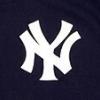
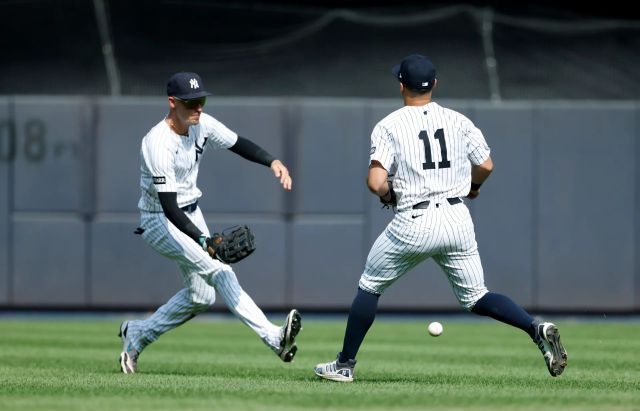
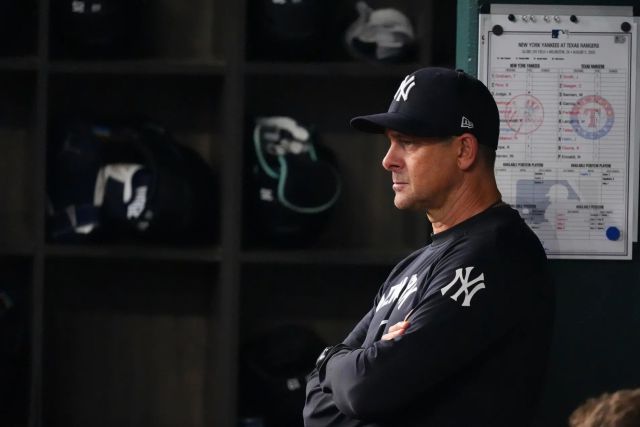
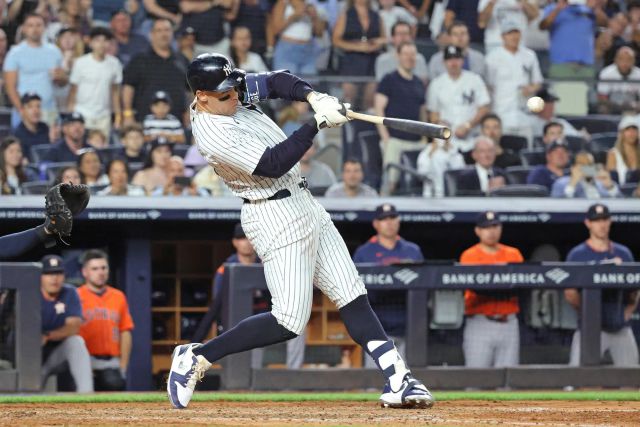
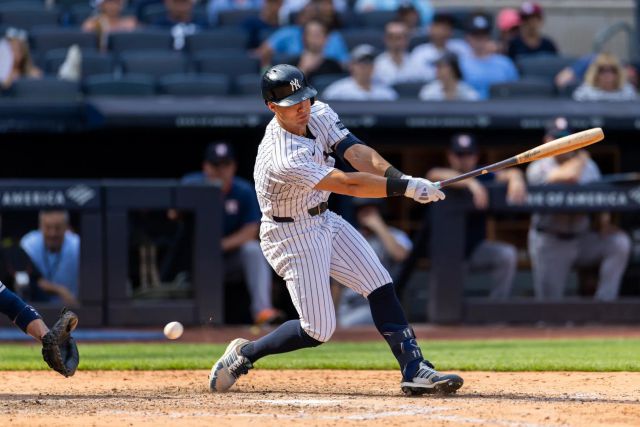
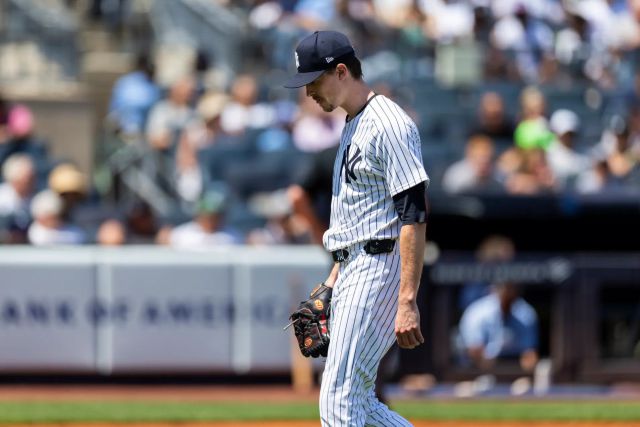
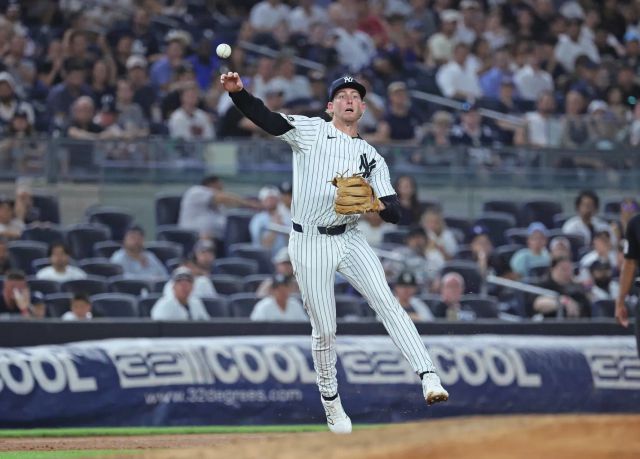
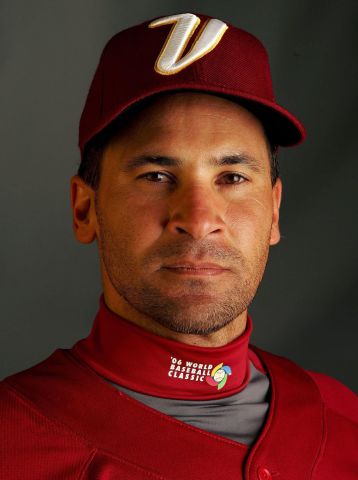
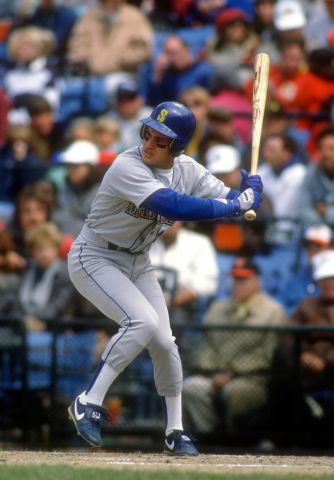
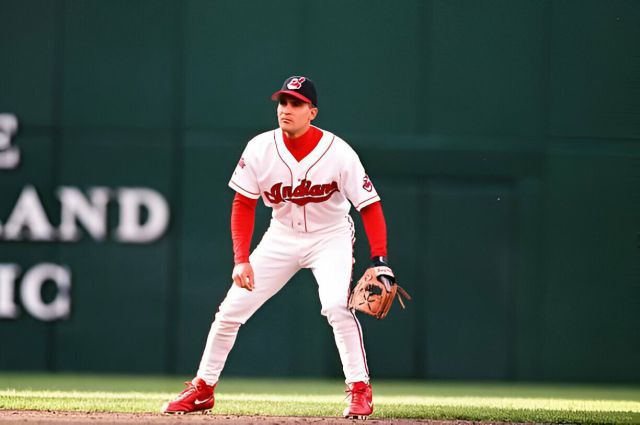
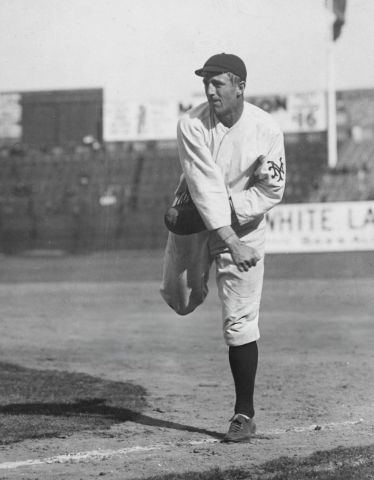
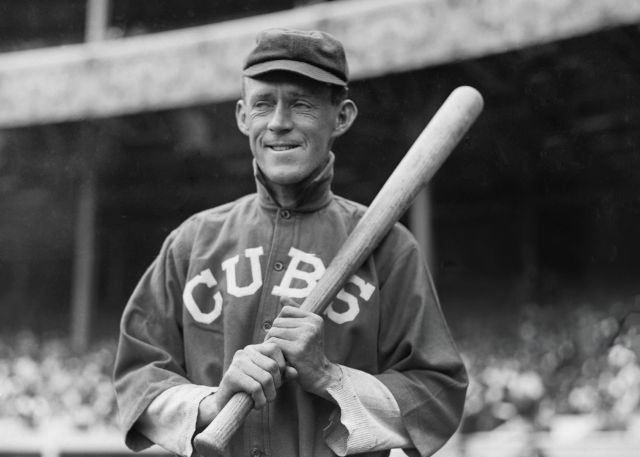
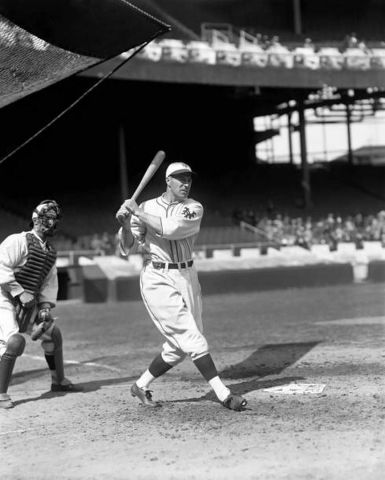
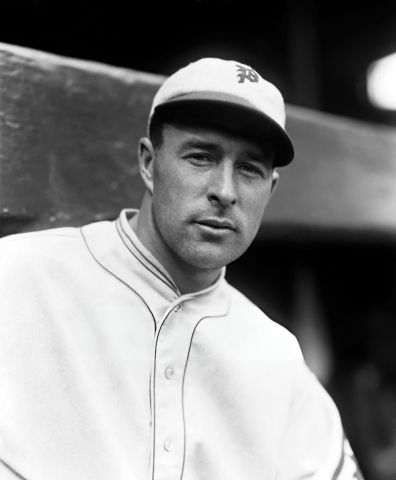
Great and Historical Games of the Past
in Baseball History
Posted
October 5, 1947: Dodgers beat Yankees to send World Series to decisive seventh game
Al Gionfriddo, right after his famous catch in game six.
The Brooklyn Dodgers had their backs to the wall. After coming back from a two-game deficit in the World Series, they lost the fifth game to the New York Yankees at Ebbets Field. Now they were back at Yankee Stadium and needed to win to keep the Series alive.
After Spec Shea’s four-hit complete game at Ebbets Field the previous day, the Yankees needed just one more victory to claim another championship. With the two teams returning to Yankee Stadium, where the Yankees had taken Games One and Two, they had to feel confident.
Yankees manager Bucky Harris planned to start Allie Reynolds. Reynolds had led the Yankees to a 10-3 victory in Game Two with his complete-game performance. “I’ll pitch Reynolds. … No, I’m not figuring on a seventh game. We’ve got ’em now,” Harris told reporters by way of expressing the Yankees’ confidence.
Burt Shotton, the Dodgers manager, had sent 18 pitchers to the mound in the first five games with no starter lasting through five innings. Vic Lombardi had told Shotton he was ready to pitch in the fourth game but the only action Lombardi saw was pinch-running. Ralph Branca had also told Shotton that he was ready to take the mound. Shotton told both pitchers, “I suppose both of you boys want to pitch today. But I can only use one of you.”
After Branca pitched 2 innings in Game Three, it was Lombardi’s turn. He had pitched four innings four days earlier, giving up five earned runs on nine Yankees hits in a 10-3 loss. Shotton hoped that Lombardi would last longer when given his second chance in the Series.
The Dodgers jumped on the Yankees right out of the gate. The first three batters singled to load the bases. When cleanup hitter Dixie Walker grounded into a double play, Eddie Stanky crossed the plate with the first Dodgers run. Then Sherm Lollar allowed a passed ball, and Pee Wee Reese scooted home for the second Brooklyn run.
In the third, consecutive doubles by Reese, Jackie Robinson, and Walker plated two more runs. At this point Harris sent Reynolds to the bench and replaced him with Karl Drews, who got the next two outs.
Lombardi made it unscathed through the first two innings, but the Yankees got on the scoreboard in the third, sending four runners across the plate to tie the game. Lollar led off with a double and reached third on a wild pitch. Spider Jorgensen fumbled Snuffy Stirnweiss’s sharp groundball, and Lollar scored. The next three batters singled, one run scored, and Shotton decided it was time to go to the bullpen.
Branca, the winner of the Game One, took over for Lombardi. He didn’t have any better success than Lombardi: Billy Johnson and pinch-hitter Bobby Brown each singled. By the time Branca retired the side the Yankees had tied the game.
Branca gave up a leadoff single to Aaron Robinson in the bottom of the fourth. After he struck out the next two batters, Tommy Henrich singled. Yogi Berra, who had entered the game in left field when Johnny Lindell was pulled with an injury, followed and hit the ball down the right-field line. “The Bums screamed to the high heavens that the umpires were blind in calling Berra’s single fair,” reported the New York Times. But the umpire disagreed and the Yankees took the lead, 5-4.
The Yankees pitchers kept the Dodgers in check until the sixth inning. With left-hander Joe Page on the mound, Bruce Edwards led off with a single. Carl Furillo followed with a double to put two runners in scoring position. Shotton now sent right-handed batter Cookie Lavagetto to bat for Jorgensen. He lifted a fly ball to Berra in left field that brought home the tying run.
Shotton went to his bench again and sent right-hander Bobby Bragan to pinch-hit for Branca. Bragan doubled to left field to score the go-ahead run. He was replaced by pinch-runner Dan Bankhead. Stanky followed with a single and reached second when Yankees catcher Robinson let Berra’s throw bounce over his head for an error.
Harris removed Page and called Bobo Newsom out of the bullpen to stop the bleeding. Newsom gave up a single to Reese that scored Bankhead and Stanky. The Dodgers’ four runs allowed them to reclaim the lead, 8-5.
In the bottom of the inning, “The Bombers came within an eyelash of tying the score again.” Joe Hatten, the third Dodgers pitcher, walked Stirnweiss and then gave a two-out single to Berra. Joe DiMaggio then sent a tremendous blast that many thought would leave the park. Rookie Al Gionfriddo made a leaping catch that “robbed Jolting Joe of his greatest moment.”
Joe Trimble of the New York Daily News described it this way: “Little Al, hydrant high and running like a bunny with his tail afire, raced back, back, back. He finally turned and stuck out his gloved right hand as the ball was about to clear the bullpen barrier for a homer. He grabbed it and held it — a great one-hand catch. The crowd roared in appreciation.”
The catch stunned the Yankees. As DiMaggio took his place in center field, he was described as “walking inconsolably in circles, doubtless wondering if he could believe his senses.”
Vic Raschi, the fifth Yankees pitcher, got the Dodgers out in order in the top of the seventh. Hatten stayed on the mound for the Dodgers. With one out, he walked two Yankees. After another out, Ralph Houk pinch-hit for Raschi and singled to load the bases. But Hatten snuffed the Yankees’ opportunity when he got Stirnweiss to fly to center field.
Baseball Commissioner Happy Chandler conferred with the umpires at the end of the inning. With the shadows falling quickly over the ballpark, they decided that if the game was tied at the end of the ninth inning the lights at Yankee Stadium would be turned on in order to allow the game to be completed.
Neither team scored in the eighth inning. After the Dodgers failed to build on the lead in the top of the ninth, the Yankees were down to their final three outs. Hatten, who had managed to squirm out of one challenge in the seventh, suddenly found himself in trouble again.
Bill Johnson led off with a single and George McQuinn walked. With the tying run coming to the plate, Shotton went to his bullpen again and called on Hugh Casey. It was Casey’s fifth appearance in the series.
Casey got Phil Rizzuto to fly out to center. Aaron Robinson followed with a single to left that loaded the bases. Lonny Frey pinch-hit for pitcher Butch Wensloff. He grounded to Jackie Robinson at first whose only play was to get a force out at second, and a run scored.
With the tying runs on base, Stirnweiss hit a weak groundball that Casey handled easily and tossed to Jackie Robinson at first to end the game. The 8-6 victory tied the Series at three games apiece and sent it to a seventh game the next day.
Both teams emptied their benches. Shotton threw “17 players into the steaming cauldron of combat, four of them pitchers.” The Yankees sent 21 players into the game but it was still not enough to catch the Dodgers.
“Well, somebody’s gonna win tomorrow,” Harris said after the game. “You can’t beat those catches. That DiMaggio drive looked like a sure home run until Gionfriddo came up with an almost impossible catch.”
With their backs to the wall, the Dodgers had tied the Series. It was the 11th time the World Series would go the distance. National League teams had won seven of those Game Sevens. The Dodgers had to feel like they were the “darlings of the baseball gods” after this victory. They just needed to win the next day and years of frustration would disappear.
Joe Dimaggio, during the 1947 World Series.